Precipitation: What It Is And The Different Types Of Precipitation
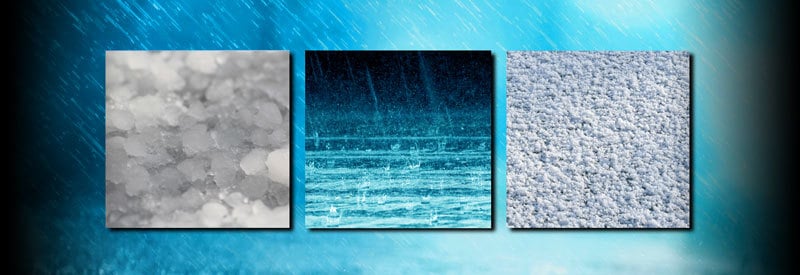
Precipitation, the umbrella term used for all meteorological events like rainfall, snow, hail, fog, and mist, forms one of the most crucial elements of weather and climate and is essential for all life on Earth.
Precipitation primarily refers to water falling to the planet's surface in its liquid, solid, or gaseous state as a result of gravity. Water droplets or ice crystals that form due to condensation or sublimation in the air collide, merge, and become too heavy to stay airborne and fall to the ground.
In short, precipitation is nothing more than water in all its form that falls on the ground as a result of gravity.
No matter what form it takes, once water particles grow and become too heavy to stay suspended in the air, gravity takes over, and it starts falling to the ground.
In this post, we examine what precipitation is, the different forms of this occurrence, and how it is formed.
What Is Precipitation?
From the introduction alone, you already should have a pretty good idea of what precipitation is. For the sake of clarity, it is better to get a complete and formal definition.
Precipitation Definition
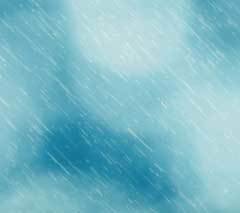
Precipitation refers to water that falls to the ground in its liquid or solid state when water droplets or ice crystals, which formed as a result of condensation or sublimation, collide and merge and become too heavy to stay suspended in the air. It can take the form of rain, snow, hail, or graupel.
As you will soon learn, all types of precipitation form in the same way, with only a few variables making the difference. And it's mostly the type of environment (clouds), temperature, and winds that determine the type of precipitation that will reach the ground.
How Does Precipitation Form?
Precipitation is mainly the result of evaporation and condensation. The form of rain can vary according to the different variables present. Without these two processes, though, it will not be possible for any precipitation to form at all.
There is more than one way for precipitation to take place, but one of the most common ways is also the best to use to explain the process.
As the sun heats the surface of the earth, over land or water, it also warms up the air directly above it. Since warm air is lighter than cold air, it starts to rise into the atmosphere as it expands.
The heat also causes moisture on the ground and surface water to evaporate, adding to the water vapor already present in the air.
Since air temperature drops with altitude, the rising warm air starts to cool down. Once it cools down to the point where the water can no longer stay in its gaseous form, condensation takes and small water droplets form.
The tiny water droplets collide and merge with each other until they become too heavy to stay suspended in the air. As a result, precipitation takes place in the state dictated by the surrounding atmospheric conditions and variables.
There is a multitude of ways for evaporation and condensation to take place, but they are all based on the key principles described in this section.
Types Of Precipitation
Even though numerous categories and subcategories of precipitation exist, we will only focus on the eight most commonly found ones. One can classify the majority of other forms of precipitation under any one of the following types:
- Rain
- Freezing Rain
- Snow
- Graupel (Snow Pellets)
- Snow Grains
- Hail
- Sleet (Ice Pellets)
- Ice Crystals (Diamond Dust)
By looking at each form of precipitation in more detail, you will also realize that the most significant difference between them, is the manner in which they are formed.
1) Rain
Rain is the most common form of precipitation that occurs across the world and is the most significant contributor to the water cycle. Before we can examine how it forms and what its characteristics are, we first need to define what exactly rain is.
What Is Rain?
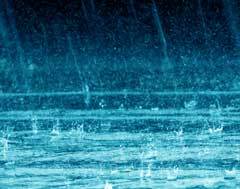
Rain is water in its liquid state. When condensation takes place in temperatures above freezing point, water vapor in the atmosphere turns from its gaseous state back into its liquid state. Small water droplets form as a result.
As the small water droplets bump into each other, combine and grow in size, it becomes too heavy to stay suspended in the air and falls to the ground as a result of gravity.
Some classification systems make a distinction between rain and drizzle. It is unnecessary since the only difference is the size of the raindrop. If it has a diameter of 0.5 mm (0.0197 inches) or less, it is classified as a drizzle. Any larger and the drop gets classified as rain.
A misconception exists about the shape of a raindrop. Most people view the teardrop shape as the shape of a drop of rain. It is not the real shape of a raindrop at all. Learn more about the true form of raindrops and why it gets confused with the teardrop shape in this article.
2) Freezing Rain
Freezing rain very seldom starts as supercooled waterdrops. It is usually rain or snow that melts before encountering a much colder layer of air. To define what freezing rain is:
What Is Freezing Rain?
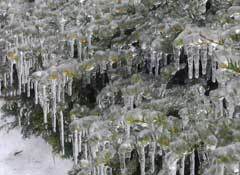
Freezing Rain forms when raindrops get supercooled as they travel through a layer of air with subzero temperatures. The resulting icy droplets immediately freeze when they come in contact with objects on the ground.
Since it creates a uniform layer of ice on the objects and surface of the ground, freezing rain can create hazardous conditions. The relatively thin, smooth layer of ice is almost invisible to the naked eye.
These slippery conditions can be lethal for road goers, as it is easy to lose control and slide on the smooth surface. It already led to numerous road accidents in the past. Pedestrians can also occur serious injury when walking and slipping on the ice-coated ground.
3) Snow
Subzero conditions and enough water vapor in the atmosphere are two of the most important ingredients necessary for the formation of snow. But what is snow?
What Is A Snow?

Snow is a collection of ice crystals that form around pollen or dust particles when water vapor condensates around them in sub-zero temperatures (below 32° Fahrenheit or 0° Celsius).
When the ice crystals collide with each other, they cling together and grow in size. When enough ice crystals join together, they form a snowflake.
As more crystals and other snowflakes get added to the main snowflake, it grows in size and weight. When it becomes too heavy, it starts to fall to the ground due to the Earth's gravity.
Snowflakes have a light and soft physical nature as it is made up of a collection of ice crystals, and can easily lose its shape or get crushed on the ground.
Under perfect conditions, it has the hexagonal (six-sided) shape most people associate with a snowflake. In real-world situations, though, this very seldom happens.
4) Graupel
Also known as snow pellets, graupel is an interesting form of precipitation. It is neither a solid hailstone nor a snowflake but rather a combination of both. The way it is formed has everything to do with its unique characteristics.
What Is Graupel?
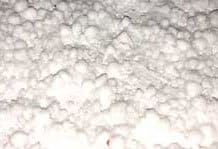
Graupel is formed when snow falls through an area of supercooled water.
Upon contact, the water freezes around the snowflake and rimes it, resulting in the formation of graupel.
Graupel cannot be classified as a form of hail or ice pellet, as it does not consist of solid or made up of layers of ice. Instead, it is lighter and more fragile as a result of the snowflake structure inside the layer of rime.
On the ground, it creates a layer of unstable ice that can easily be crushed or deformed.
5) Snow Grains
As the name suggests, snow grains are very small pieces of ice.
What Are Now Grains?
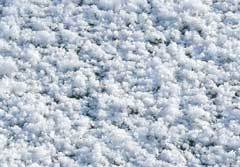
Snow grains are small flat pieces of solid ice, usually less than 1 millimeter in diameter.
They typically fall from stratus clouds or fog and in small numbers at a time.
Due to their small size and the fact that they never fall in the form of a shower, they are often seen as the frozen equivalent of drizzle.
6) Hail
Hail is probably the most well-known type of precipitation that consists of solid ice. Not many observers are aware of how these sometimes golfball-sized balls of ice balls are formed.
What Is Hail?
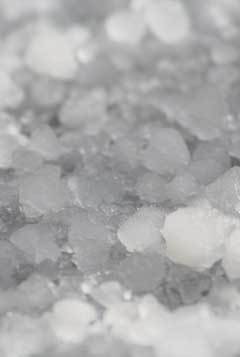
Hail is solid layered balls of ice that form as water droplets are carried up high in the atmosphere through updrafts in storm systems. At these altitudes, they are exposed to temperatures below freezing point, causing them to freeze into hailstones.
Updrafts keep carrying the hailstones up into freezing air, adding a layer of ice each time until they become too heavy and fall to the ground.
Hail commonly occur in clouds with a large vertical buildup like cumulonimbus clouds and supercells where strong updrafts are present. Hailstones also vary in size from only a few millimeters to the size of tennis balls.
Depending on the size of the hailstones, a hailstorm can be devastating and cause extensive damage to infrastructure, vegetation, and transport. It can also cause injury, and in some cases, be fatal to humans and animals.
7) Sleet
Also known as ice pellets, sleet is often confused with hail. Although there may be similarities in appearance, sleet is different in structure and the way it forms.
What Is Sleet?
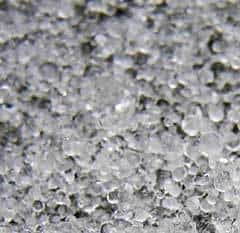
Sleet is the small ice pellets that form when snow or other frozen objects fall through a layer of warm air.
It melts into a liquid form before falling through another layer of air with subzero temperatures, which cause it to freeze again and form small pellets of ice.
Since it is much smaller than hail, it does not pose any significant threat to infrastructure, vegetation, and transport. It does, however, result in slippery conditions on surfaces like roads which motorists often underestimate.
8) Diamond Dust
Diamond dust is also known as ice crystals or ice needled and, as the name suggests, very small in size. (Basically, the same size as a drizzle.)
What Is Diamond Dust?
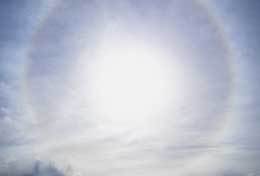
Diamond Dust is tiny ice crystals that form close to the ground and at temperatures below -30° Celsius (-22° Fahrenheit).
It has the physical appearance of a low-lying transparent cloud.
This almost microscopic-sized form of precipitation gets its name from the sparkling effect of the sun's light reflecting off the ice crystals.
Conclusion
As you can clearly see, precipitation comes in many forms. From solid ice to light drizzle and everything in between, the impact on the environment and the conditions it creates can also vary widely.
In this post, we defined precipitation, listed the most common forms it can take, and described their formation and characteristics.
Never miss out again when another interesting and helpful article is released and stay updated, while also receiving helpful tips & information by simply clicking on this link .
Until next time, keep your eye on the weather!

